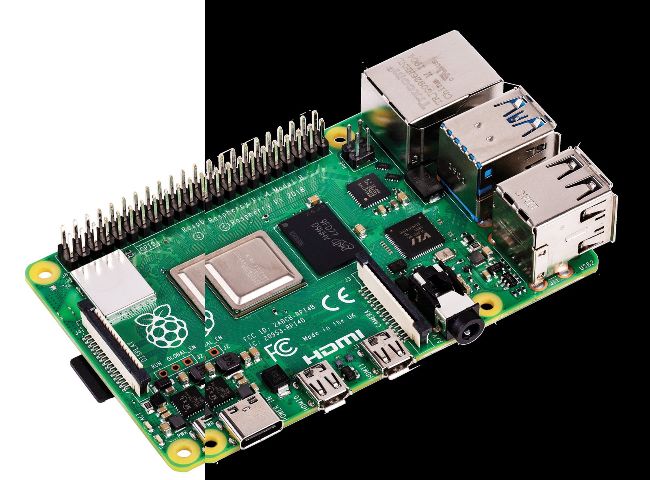Raspberry Pi
Getting Started With Raspberry Pi
Single-board computers have captured the imagination of many PC builders. Here’s Ian Evenden’s beginner’s guide to getting a Raspberry Pi up and running

© RASPBERRY PI FOUNDATION
Why do we love the Raspberry Pi so much? Possibly because it’s the purest form of computer hardware. Unadorned by cases or fans or RGB (unless you want them), you’re forced to get your fingers in there and handle the PCB if you want to do anything.
You can put it in a case or you can run it naked, without so much as a heatsink, but fans have to be plugged to specific pins on that tempting GPIO array. Which sparks the thought—what else can they do?
It’s also a highly disruptive device. Our small computers— smartphones and tablets mainly—are sleek and expensive, and come armed with expansive software libraries. The Pi is cheap— cheaper still than many other single-board computers—and is backed by a decent software library, with a distinctly educational focus, thanks to its Debian Linux-based operating system. This means you can use it as a PC for everyday tasks, as well as creating your own electronics projects, and using it to learn programming or play retro games.
If you’ve ever wondered why sections of the computing community are going mad for this diminutive PC, here’s our guide to starting out in this wonderful world.
A Little History
The Raspberry Pi isn’t one thing. There have been several models, some smaller than others, and it sits across a couple of market sectors. When we say a Raspberry Pi, we’re generally talking about the current “big” model—the 4B. This is the one you can see in its naked glory across the opening spread of this feature. It’s got Ethernet, lots of USB ports, and the fastest CPU and most RAM of the lot.
The product of a UK-based charity (The Pi Foundation) that’s working to get cheap computers into the hands of people all over the world, the Pi 4 has four main predecessors. Starting out in 2012, the original Pi had an ARM 11 32-bit processor, 512MB of RAM, Ethernet, HDMI, a microSD card slot, 26 (later 40) GPIO pins, headphone socket, and two USB 2.0 ports. It went through a few revisions, including a “compute module” that fits in a DDR2 SO-DIMM form factor for industrial uses. It introduced the Pi’s camera and display ribbon-cable ports.
This was superseded in 2015 by the Raspberry Pi 2, which brought a 900MHz (later 1.2GHz) ARM Cortex processor and 1GB of RAM. Again, there were a few revisions, until the Pi 3B was released in 2016 with a 1.2GHz ARM Cortex A53 CPU, and onboard Wi-Fi and Bluetooth. This could boot from USB, and received an upgrade, the B+, which speeded up its networking and processor. A compute module was also available.
Alongside, there have been other releases. The Raspberry Pi Zero comes in three different varieties depending on how much you need wireless communication and GPIO pins soldered to the board. It’s tiny, selling for $7 on release in 2015, and comes with a 1GHz singlecore ARM CPU, 512MB of RAM, mini HDMI, microSD, and two micro-USB ports, one for data and the other for power. If that’s not small enough, there’s the even tinier Pi Pico, a $4 microcontroller that needs to be programmed from another computer.

The Raspberry Pi 3B was the first to boot from USB.
© RASPBERRY PI FOUNDATION, WKIMEDIA
Back to the bigger end of the Pi spectrum, the 4B has a quad-core Cortex-A72 64-bit CPU at 1.5GHz (which you can overclock if you add active cooling). This is backed by up to 8GB of RAM, and the board features Wi-Fi 5 and Bluetooth 5, Gigabit Ethernet, two USB 3.0 ports and two USB 2.0, all the usual GPIO pins, microSD, and ribbon cable ports, and a pair of Micro HDMIs that can drive a screen up to 4K at 60Hz. There’s a compute module, and a variant model, the Raspberry Pi 400, that is installed inside a keyboard, with cooling that lets it run at 1.8GHz, but at the expense of one of the USB 2.0 ports.